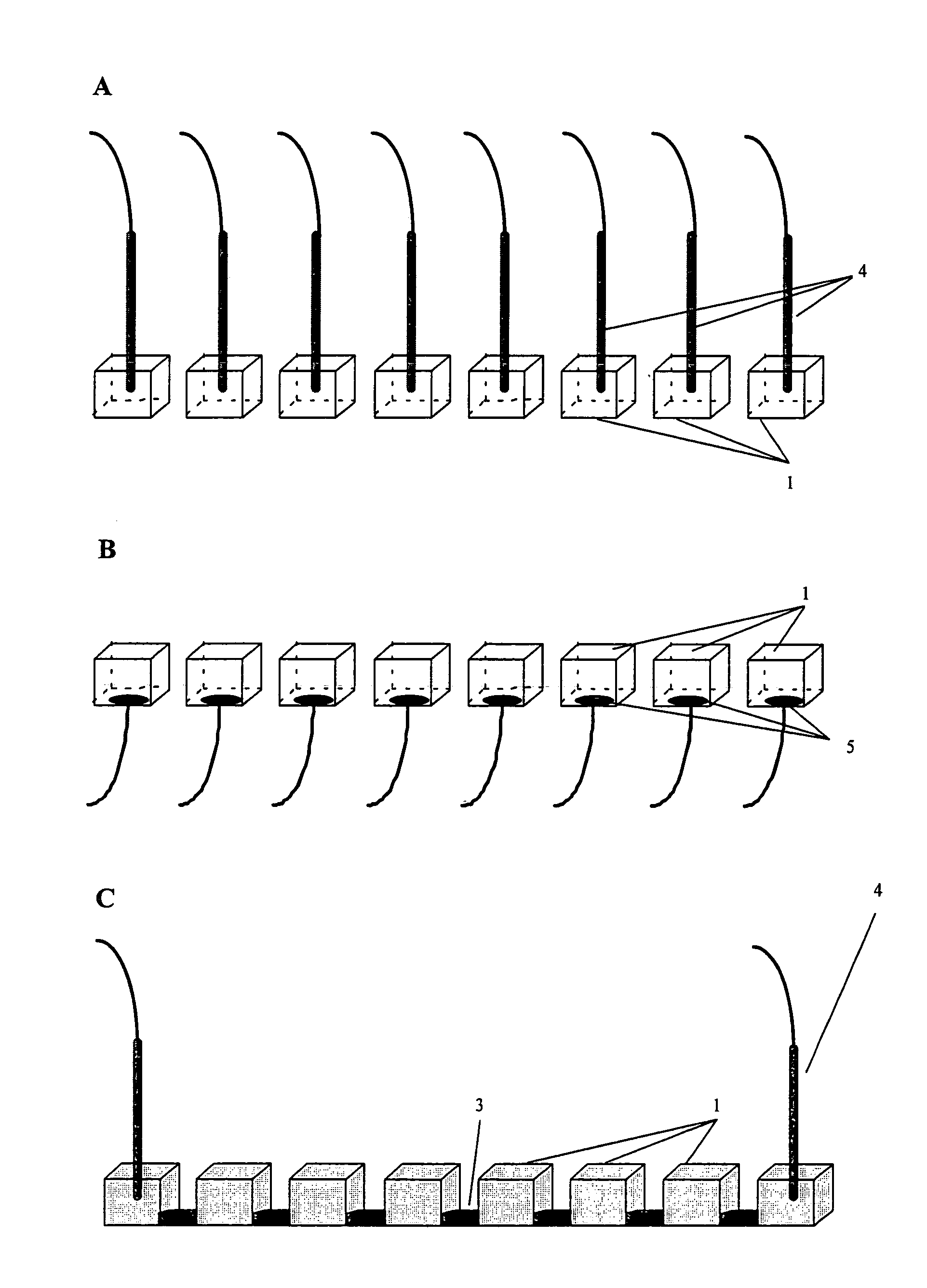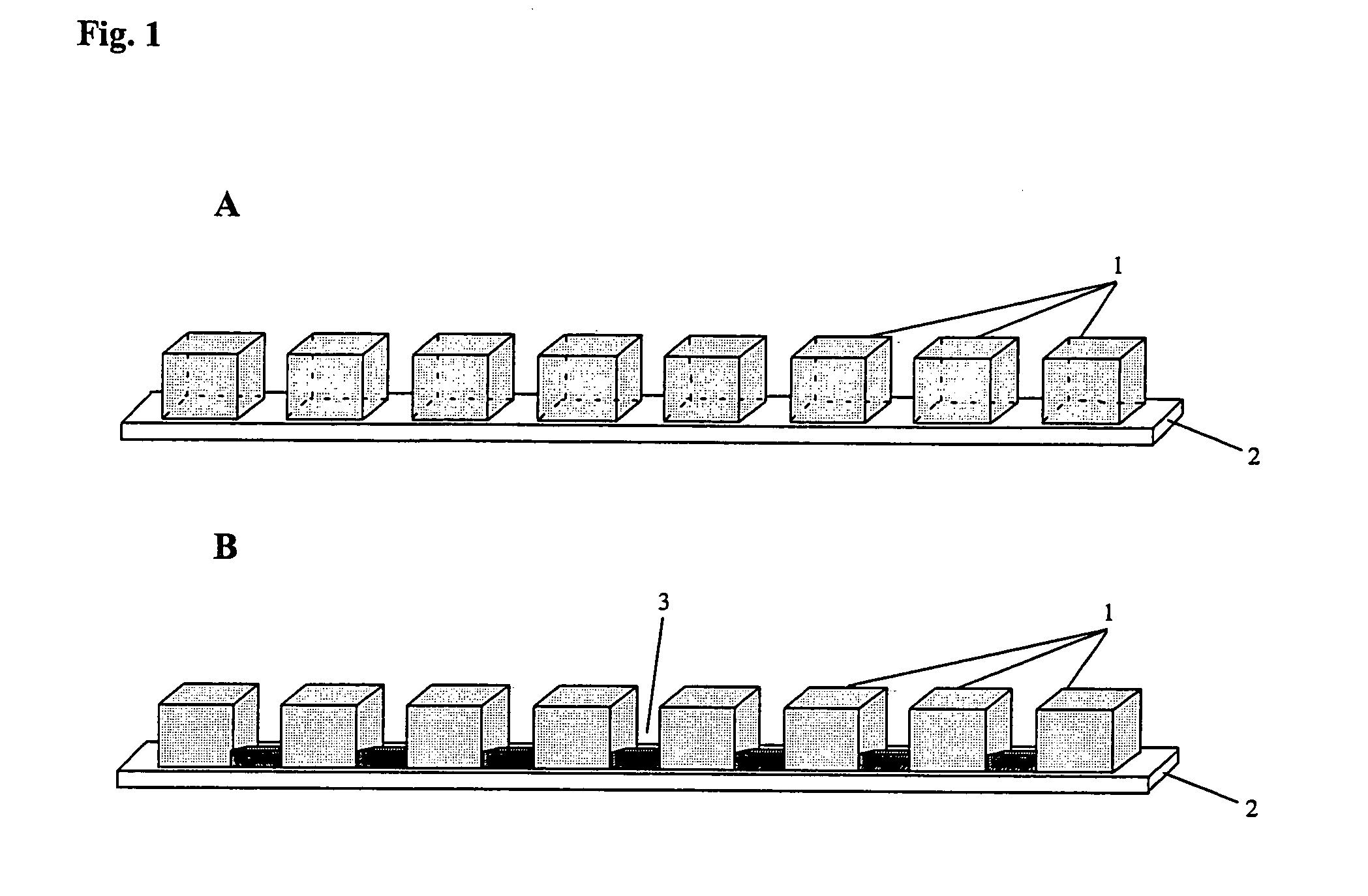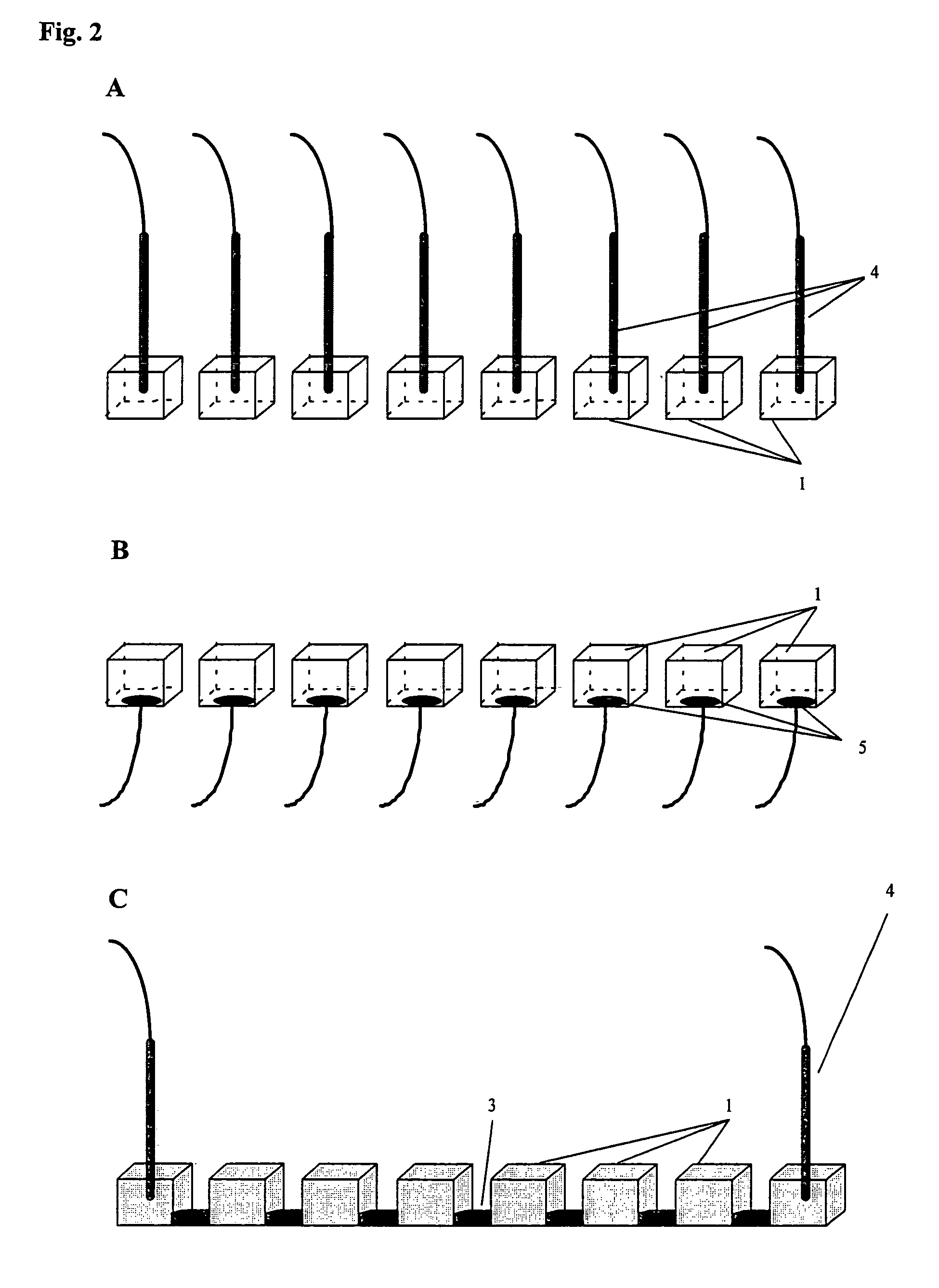Apparatus and method for separating an analyte
a technology of analyte and apparatus, applied in the field of proteomics, can solve the problems of time-consuming and/or risky extraction procedures such as blotting or spot cutting, affecting the recovery and activity of proteins, and ms analysis disadvantages, so as to minimize the “dead” area between the compartments, minimize the number of molecules that penetrate into and minimize the effect of adsorption of molecules onto the chemical buffering system
- Summary
- Abstract
- Description
- Claims
- Application Information
AI Technical Summary
Benefits of technology
Problems solved by technology
Method used
Image
Examples
example i
[0072]Methylene blue was obtained from Fluka. Immobiline DryPlates (pH range 4.0 7.0, 11 cm), which are immobilized pH gradient. (IPG) gels, were from Amersham Pharmacia Biotech. All the experiments were performed in MilliQ water.
[0073]The multi-compartment set-up was a micro-titerplate (Millipore) composed of 96 (12×8) plastic wells (id 6 mm) opened at top and bottom extremities. In this experiment, the chemical buffering means comprises IPG gels that are cut to strips with a width of 7-8 mm, which is necessary to avoid solvent leakage. The length of the gel depended on the pH gradient to be distributed between the different wells. Reswelling of the gels was carried out for 1 hour at room temperature in water. The wells of the micro-titerplate were placed on top of the reswelled gel.
[0074]The wells were filled with 75 μl of analyte solution or water. A platinum electrode 4 was placed in the top extremity of each well. The electrodes were operated with a Landis & Gyr power supply. S...
example ii
[0079]β-lactoglobin B and equine myoglobin were purchased from Sigma. An aqueous solution of 500 μM β-lactoglobin B (pI=5.2) and 500 μM equine myoglobin (pI=7.0) was prepared. In this case, the experiment was performed using three adjacent wells placed on top of an immobiline gel, respectively on the pH 4.9, 5.2 and 5.6 lines. The other elements of the experimental set-up (multi-compartments, electrodes, chemical buffering system and power supply) were the same as in Example I above. The protein solution was placed in each of the three wells, which also contained an electrode. The experimental set-up used for this experiment is shown in FIG. 6.
[0080]MS assays were performed with an Ion Trap LCQ duo mass spectrometer (Finnigan) in a medium composed of 50 / 49 / 1 (v / v / v) CH3OH / H2O / CH3COOH. The experiments were performed at a flow-rate of 5 μl / min under a polarization of 5 kV.
[0081]The individual mass spectra of β-lactoglobin B and myoglobin are respectively presented in FIGS. 7 and 8. Th...
example iii
[0086]In order to demonstrate the unique feature of direct fluidic connection between the compartments, a comparison experiment between two multi-compartment IEF separations has been conducted whereby in one experiment, a direct fluidic connection is present (FIG. 13) and in the other, no direct fluidic connection is present (FIG. 14). The experiments have been conducted by means of 21 cm long polyurethane devices composed of 30 compartments. The direct fluidic connections were obtained by opening holes at the bottom of the walls separating the compartments. Control experiments were performed using the same prototype but without fluidic connections. The geometries of the non modified and modified devices are similar to the set-up respectively presented in FIGS. 4A and 4B. The polyurethane multi-compartment devices are compatible with the strip holders and with the IPGphor power supply from Amersham Biosciences which were used to perform electrophoretic separations.
[0087]Immobiline p...
PUM
| Property | Measurement | Unit |
|---|---|---|
| diameter | aaaaa | aaaaa |
| width | aaaaa | aaaaa |
| pH | aaaaa | aaaaa |
Abstract
Description
Claims
Application Information
 Login to View More
Login to View More - R&D
- Intellectual Property
- Life Sciences
- Materials
- Tech Scout
- Unparalleled Data Quality
- Higher Quality Content
- 60% Fewer Hallucinations
Browse by: Latest US Patents, China's latest patents, Technical Efficacy Thesaurus, Application Domain, Technology Topic, Popular Technical Reports.
© 2025 PatSnap. All rights reserved.Legal|Privacy policy|Modern Slavery Act Transparency Statement|Sitemap|About US| Contact US: help@patsnap.com



